Stand by Me (film)
8 /10 1 Votes
Country United States | 8/10 IMDb Genre Adventure, Drama Featured song Stand by Me Duration Language English | |||||||||||||||||||||||||||||||||
 | ||||||||||||||||||||||||||||||||||
Release date August 8, 1986 (1986-08-08) Cast (Gordie Lachance), (Chris Chambers), (Teddy Duchamp), (Vern Tessio), (Ace Merrill), (Denny Lachance) Similar movies The Go-Getter (2007) Tagline For some, it's the last real taste of innocence, and the first real taste of life. | ||||||||||||||||||||||||||||||||||
The body stand by me 1 8 movie clip 1986 hd
Stand by Me is a 1986 American coming-of-age drama film directed by Rob Reiner, and starring Wil Wheaton, River Phoenix, Corey Feldman, and Jerry O'Connell. The film, whose plot is based on Stephen King's novella The Body (1982) and title is derived from Ben E. King's eponymous song, which plays over the ending credits, tells the story of four boys in a small town in Oregon who go on a hike to find the dead body of a missing child.
Contents
- The body stand by me 1 8 movie clip 1986 hd
- Train stand by me 2 8 movie clip 1986 hd
- Plot
- Production
- Casting
- Locations
- Title
- Music
- Box office
- Critical response
- Accolades
- Events and tourism
- Production company
- Books
- Movies
- Television
- Video games
- Goodbye to childhood stand by me 8 8 movie clip 1986 hd
- References
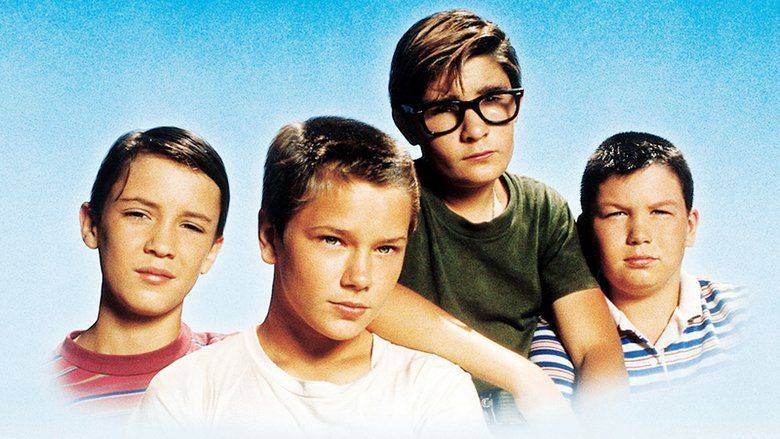
Train stand by me 2 8 movie clip 1986 hd
Plot
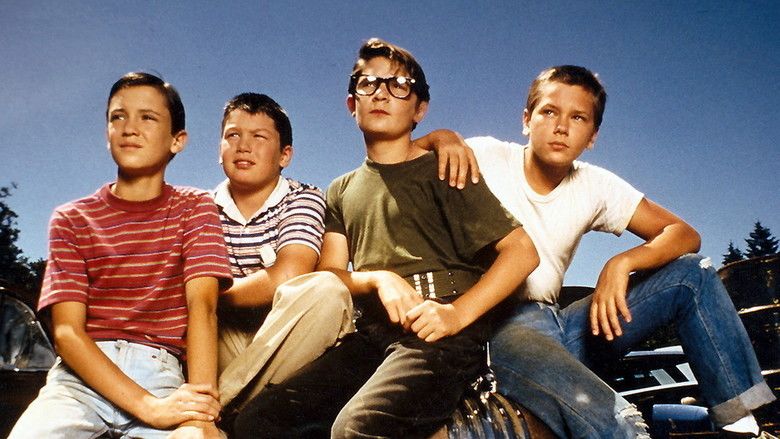
Author Gordie Lachance reads a newspaper article titled "Attorney Christopher Chambers Fatally Stabbed In Restaurant". Seeing two young boys ride past on bicycles, Gordie narrates a flashback (later revealed to be Gordie writing) to a childhood incident when he and three buddies undertook a journey to find the body of a missing boy near the town of Castle Rock, Oregon, over Labor Day weekend in 1959.
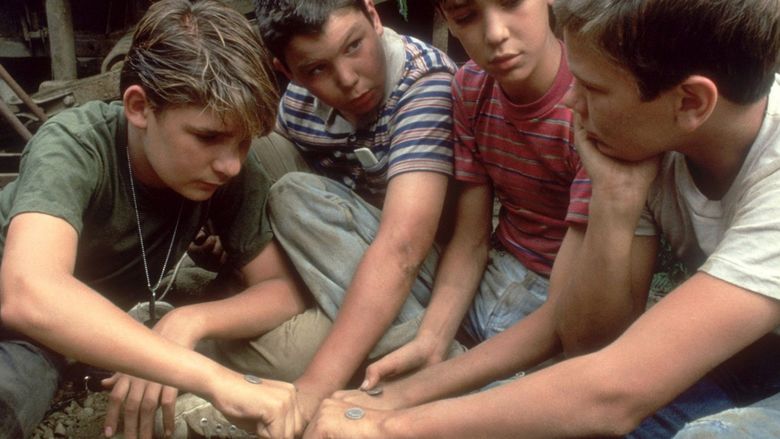
Young Gordie is a quiet, bookish boy who likes to tell stories. His parents, grieving the recent death of Gordie's older brother Denny, neglect their younger son. Gordie's friends are Chris Chambers, whose relatives are criminals and alcoholics; Teddy Duchamp, an eccentric and physically scarred boy; and Vern Tessio, who is overweight and timid.
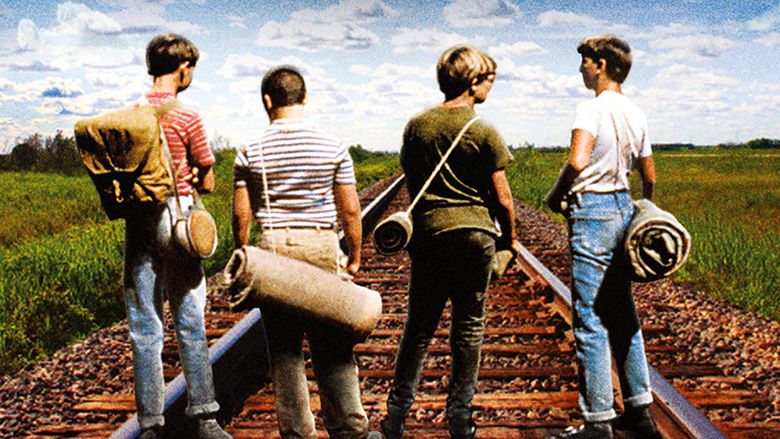
Vern overhears his older brother, Billy, and Billy's friend, Charlie Hogan, discussing Ray Brower, a young boy who has been missing for some time. Gordie, Chris, Teddy, and Vern decide to find Ray's body, hoping to become local heroes. Chris steals his father's M1911 pistol, and the boys set out, stopping at a nearby junkyard to drink from its water pump. The boys hang out in the junkyard for a while, while Gordie leaves to buy food for the journey. When Gordie returns, he sees his friends jumping the fence to escape Milo Pressman, the junkman, and his dog Chopper. Gordie escapes as well. Pressman, infuriated, threatens to call the boys' parents and calls Teddy's father a "loony"; Teddy attempts to attack Pressman, but the boys restrain him and they leave.
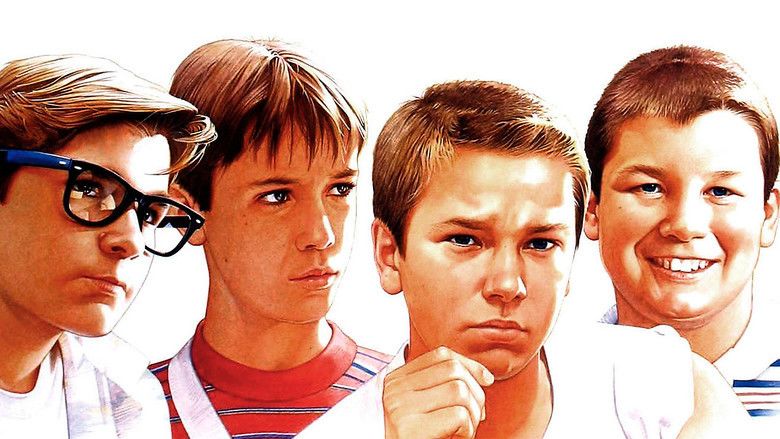
At nighttime, Gordie tells the other boys a story of Davie "Lard-Ass" Hogan, an overweight boy who is constantly teased and bullied. Hogan enters a pie-eating contest, but his goal was not to win, but to exact revenge. Prior to the contest, Hogan consumed a full bottle of castor oil and a raw egg. After eating several pies and briefly dominating the contest, Hogan vomits, inducing the vomiting of the contestants and crowd members, humiliating and embarrassing his tormentors.
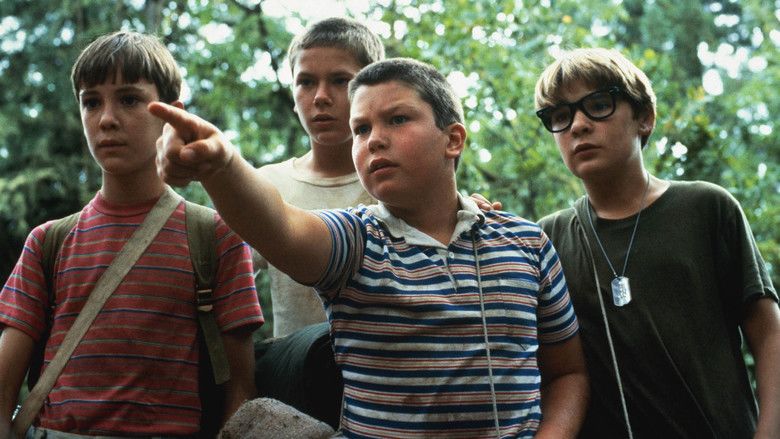
After a series of misadventures and self-revelation, the boys locate the body. However, local hoodlum "Ace" Merrill and his gang, including Chris' older brother "Eyeball" Chambers, Billy Tessio, Charlie Hogan, and three other gang members, arrive in cars to claim the body and the credit for finding it. When Chris refuses to allow this, Ace draws a switchblade with intent to kill him, but Gordie intervenes with the pistol Chris had stolen. Ace and his gang leave and Ace vows revenge.

The boys agree to report the body via an anonymous phone call to the authorities and hike back to Castle Rock and bid each other farewell until they see each other in a few days, at junior high school.
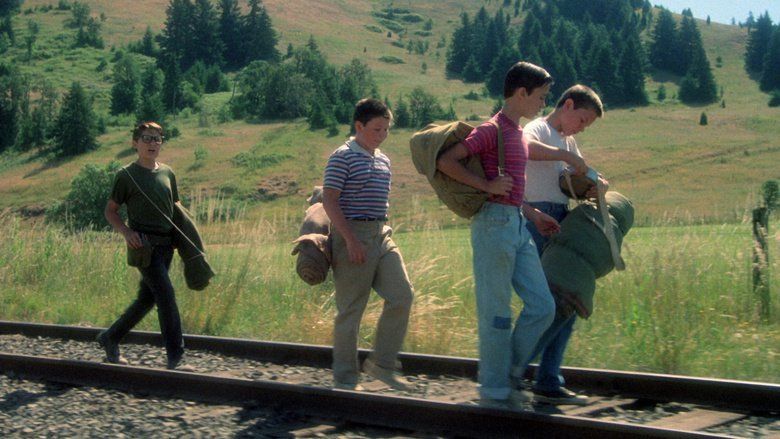
The present-day Gordie writes that while he and Chris remained friends, they drifted apart from Teddy and Vern shortly after that day. Gordie notes how everyone's life turned out: Vern married immediately after high school, has four children, and drives a forklift at a local lumberyard. Teddy tried enlisting in the army but was turned down because of bad eyesight and an ear injury; he later served time in prison and now does odd jobs around town. Chris went to college and became a lawyer; when attempting to break up a fight in a fast-food restaurant, he was fatally stabbed.
After finishing the story, Gordie walks outside and drives away with his son and his son's friend to take them swimming.
Production
Bruce A. Evans sent a copy of Stephen King's novella The Body to Karen Gideon, the wife of his friend and writing partner Raynold Gideon on August 29, 1983 as a gift for her birthday. Both Gideon and Evans quickly became fans of the novella and shortly thereafter contacted King's agent, Kirby McCauley, seeking to negotiate film rights; McCauley replied that King's terms were $100,000 and 10% of the gross profits. Although the money was not an issue, the share of gross profits was considered excessive, especially considering that no stars could be featured to help sell the movie. In response, Evans and Gideon pursued an established director, Adrian Lyne, to help sell the project.
After reading the novella, Lyne teamed up with Evans and Gideon, but all the studios the trio approached turned the project down except for Martin Shafer at Embassy Pictures. Embassy spent four months negotiating the rights with McCauley, settling on $50,000 and a smaller share of the profits, and Evans and Gideon spent eight weeks writing the screenplay. Evans and Gideon asked to also produce the film, but Shafer suggested they team up with Andy Scheinman, a more experienced producer. Embassy was unwilling to meet Lyne's salary for directing the film until Evans and Gideon agreed to give up half of their share of profits to meet Lyne's asking price.
Reiner later recalled that Lyne was going to direct the film, but had promised himself a vacation following the production of 9½ Weeks, and would not be available to start production until the spring of 1986. Reiner, better known at the time as the actor who had played 'Meathead' Stivic in All in the Family, was sent the script by Scheinman, and his initial reaction was the script had promise but "no focus". After Lyne withdrew from the project, Reiner signed on to direct in September 1984. Reiner realized the story should focus on Gordie, as "his father always paid more attention to his older brother" and he identified with that, as he struggled with the shadow of fame cast by his comedian father, Carl Reiner. The writers incorporated Reiner's suggestions, producing a new script by December 1984 for Embassy's review and approval.
Days before shooting started in the summer of 1985, Embassy was sold to Columbia Pictures, who made plans to cancel the production. Norman Lear, one of the co-owners of Embassy, gave $7.5 million of his own money to complete the film, citing his faith in Reiner and the script. However, since Embassy also would have distributed the film, once the film was completed it had no distributor. The producers showed a print to Michael Ovitz, head of the powerful Creative Artists Agency, and Ovitz promised to help them find a distributor. Paramount, Universal Pictures, and Warner Bros. all passed on the film; Columbia Pictures production head Guy McElwaine screened the film at his house because he was feeling ill, and the positive reaction of his daughters convinced him to distribute the film.
Casting
In a 2011 interview with NPR, Wil Wheaton attributed the film's success to the director's casting choices:
Rob Reiner found four young boys who basically were the characters we played. I was awkward and nerdy and shy and uncomfortable in my own skin and really, really sensitive, and River was cool and really smart and passionate and even at that age kind of like a father figure to some of us, Jerry was one of the funniest people I had ever seen in my life, either before or since, and Corey was unbelievably angry and in an incredible amount of pain and had an absolutely terrible relationship with his parents.
Feldman recalled how his home life translated into his onscreen character: "[Most kids aren't] thinking they're going to get hit by their parents because they're not doing well enough in school, which will prevent them from getting a work permit, which will prevent them from being an actor." O'Connell agreed that he was cast based on how his personality fit the role, saying "Rob really wanted us to understand our characters. He interviewed our characters. [...] I tried to stay like Vern and say the stupid things Vern would. I think I was Vern that summer." Reiner and the producers interviewed more than 70 boys for the four main roles, out of more than 300 who auditioned; Phoenix originally read for the part of Gordie Lachance.
Rather than start shooting right away, Reiner put the four main actors together for two weeks to play games from Viola Spolin's Improvisation for the Theater (which Reiner called "the bible" of theater games) and build camaraderie, which led to a real friendship between them and several one-shot takes, where the young actors hit their cues perfectly. Wheaton would recall "When you saw the four of us being comrades, that was real life, not acting."
Before settling on Richard Dreyfuss as the narrator (and the role of the adult Gordie), Reiner considered David Dukes, Ted Bessell, and Michael McKean.
Locations
Parts of the film were shot in Brownsville, Oregon, which stood in for the fictional town of Castle Rock. The town was selected for its small town, 1950s ambience. The town fondly remembers the making of the movie in June and July 1985, in which approximately 100 local residents were employed as extras, and since 2007 has held an annual Stand By Me Day each July which has drawn international attendees.
The blueberry pie eating contest was also filmed in Brownsville; residents were employed as extras and a local bakery supplied the pies and extra filling, which was mixed with large-curd cottage cheese to simulate the vomit. The quantity of simulated vomit varied per person, from as much as 5 US gallons (19 l) during the triggering event to little as 1⁄16 US gallon (0.24 l).
Scenes that include the "mailbox baseball" game and the junkyard scenes were filmed in Veneta, Oregon. The junkyard is still in operation. The campout/standing guard scene was filmed in Eugene, Oregon, just a few miles from Veneta. The general store is in Franklin, Oregon, just north of Veneta. Scenes along the railroad tracks were shot near Cottage Grove, Oregon, along the Oregon, Pacific and Eastern Railway. The line was abandoned 1994; the roadbed was repurposed as the Row River National Recreation Trail.
The scene where the boys outrace a steam train engine across an 80-foot tall trestle was filmed on the McCloud River Railroad, above Lake Britton Reservoir, near McArthur-Burney Falls Memorial State Park in California. The scene took a full week of shooting, making use of four small adult female stunt doubles with closely cropped hair, made up to look like the film's protagonists. Plywood planks were laid across the trestles to provide a safer surface on which the stunt doubles could run. The locomotive used for the scene, M.C.R.R. 25, is still in daily operation for excursion service on the Oregon Coast Scenic Railroad. Telephoto compression was used to make the train appear much closer than it actually was, and the actors did not feel a sense of danger until Reiner threatened them. "You see those guys? They don’t want to push that dolly down the track any more. And the reason they’re getting tired is because of you. I told them if they weren't worried that the train was going to kill them, then they should worry that I was going to. And that's when they ran."
Title
In March 1986, Columbia Pictures, concerned that the original title, The Body, was misleading, renamed the film Stand by Me. According to screenwriter Raynold Gideon, "...it sounded like either a sex film, a bodybuilding film or another Stephen King horror film. Rob came up with Stand by Me, and it ended up being the least unpopular option."
Music
Jack Nitzsche composed the film's musical score. On August 8, 1986, a soundtrack album was released containing many of the 1950s and early 1960s oldies songs featured in the film:
- "Everyday" (Buddy Holly) – 2:07
- "Let the Good Times Roll" (Shirley and Lee) – 2:22
- "Come Go with Me" (The Del-Vikings) – 2:40
- "Whispering Bells" (The Del-Vikings) – 2:25
- "Get a Job" (The Silhouettes) – 2:44
- "Lollipop" (The Chordettes) – 2:09
- "Yakety Yak" (The Coasters) – 1:52
- "Great Balls of Fire" (Jerry Lee Lewis) – 1:52
- "Mr. Lee" (The Bobbettes) – 2:14
- "Stand by Me" (Ben E. King) – 2:55
Box office
The film was a box office success in North America. It opened in a limited release on August 8, 1986 in 16 theaters and grossed $242,795, averaging $15,174 per theater. The film then had its wide opening in 745 theaters on August 22 and grossed $3,812,093, averaging $5,116 per theater and ranking #2. The film's widest release was 848 theaters, and it ended up earning $52,287,414 overall, well above its $8 million budget.
Critical response
Rotten Tomatoes, a review aggregator, reports that 91% of 53 surveyed critics gave the film a positive rating; the average rating was 8/10.
Reviewing for The New York Times, Walter Goodman thought the direction was rather self-conscious, "looking constantly at his audience"; Goodman called it a "trite narrative" and that "Reiner's direction hammers in every obvious element in an obvious script." Dave Kehr wrote "there's nothing natural in the way Reiner has overloaded his film with manufactured drama" in his review for the Chicago Tribune. In contrast, Sheila Benson called it "[a treasure] absolutely not to be missed" in her review for the Los Angeles Times. Paul Attanasio, reviewing for The Washington Post, called the acting ensemble "wonderful", and particularly praised the performances by Wheaton and Phoenix.
Stephen King, whose novella this film was adapted from, was very impressed with the finished result and indicated, on the special features of the 25th anniversary Blu-ray set, that he considered the film to be the first successful translation to film of any of his works. According to a later interview with Gene Siskel, Reiner recalls that after a private early screening of the film, King excused himself for fifteen minutes to compose himself, returning to remark "That's the best film ever made out of anything I've written, which isn't saying much. But you've really captured my story. It is autobiographical."
Accolades
Nominations
Events and tourism
Brownsville has held an annual "Stand By Me Day" since 2007, which has attracted international participants and includes a pie eating contest. On July 24, 2010, a 25th Anniversary Celebration of the filming of Stand by Me was held in Brownsville, Oregon. The event included a cast and crew Q&A session, an amateur blueberry pie eating contest, and an outdoor showing of the film.
Stand By Me Day was officially fixed to July 23 by the Brownsville Chamber of Commerce in 2013. To encourage tourism, the city has embedded a penny in the street at Main and Park, where Vern found one, and an advertising mural painted for the movie production has survived.
Production company
In 1987, following the success of Stand by Me, Reiner co-founded a film and television production company and named it Castle Rock Entertainment, after the fictional setting of the story.
Books
Movies
Music
Television
Video games
Goodbye to childhood stand by me 8 8 movie clip 1986 hd
References
Stand by Me (film) WikipediaStand by Me (film) IMDb Stand by Me (film) themoviedb.org
